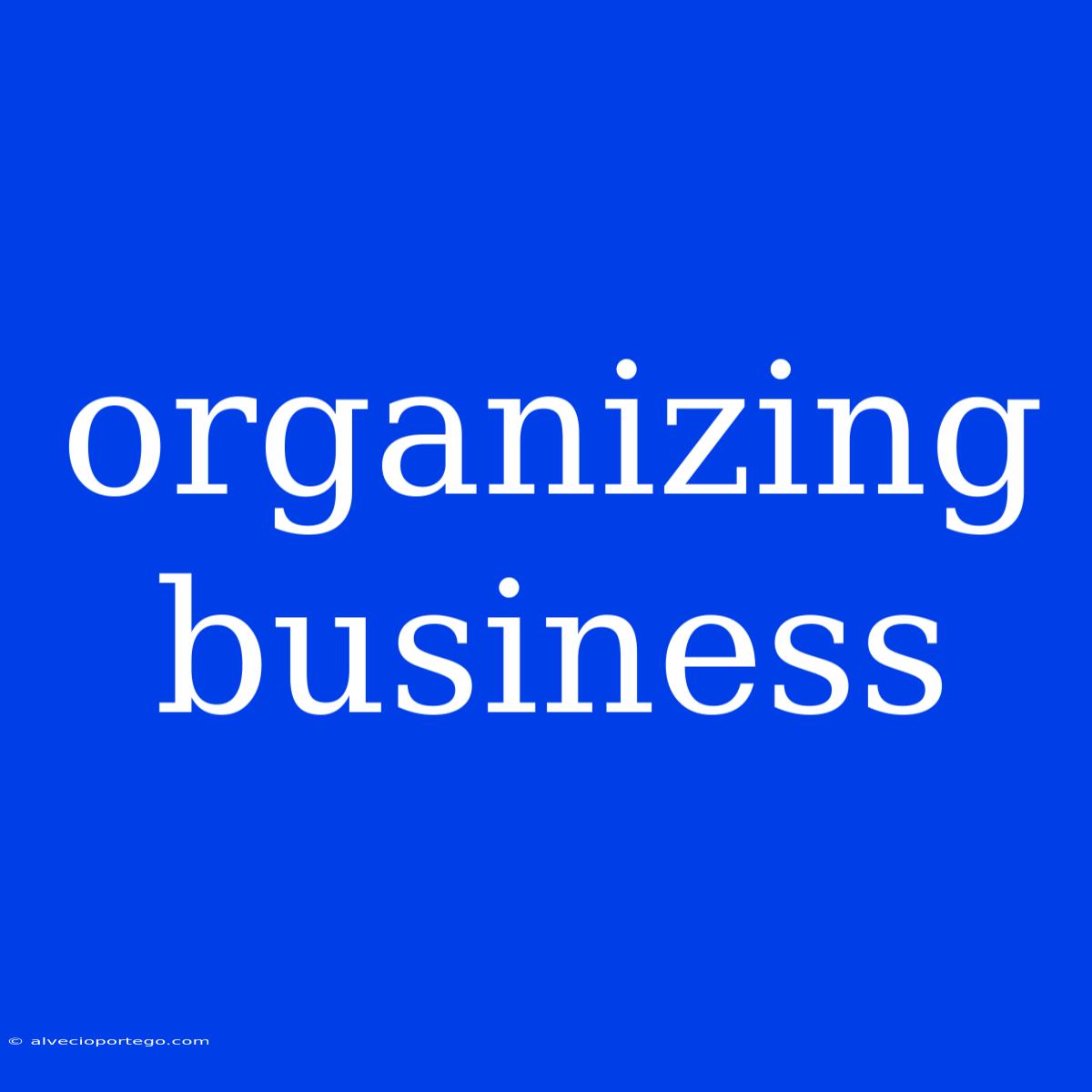Organizing a Business: A Foundation for Success
A well-organized business is like a well-oiled machine. It runs smoothly, efficiently, and effectively. Organizing your business is not just about tidying up your desk; it's about establishing clear structures, processes, and systems that allow your business to thrive. Here's a breakdown of key areas to focus on:
1. Defining Your Business Structure:
- Business Model: Clearly define your core offerings, target market, and revenue streams. A solid business model serves as the blueprint for your operations.
- Legal Structure: Choose the most suitable legal structure (sole proprietorship, partnership, LLC, etc.) for your business based on liability considerations, tax implications, and future growth plans.
- Organizational Chart: Establish a clear hierarchy within your company, outlining roles, responsibilities, and reporting lines. This ensures accountability and efficient communication.
2. Streamlining Operations:
- Process Mapping: Identify and document key business processes. This helps to optimize workflows, eliminate redundancies, and identify areas for improvement.
- Task Management: Utilize project management tools and techniques to assign responsibilities, track progress, and ensure deadlines are met.
- Data Management: Implement systems for storing, organizing, and retrieving important information. This allows for easy access and informed decision-making.
3. Managing Resources:
- Financial Management: Implement a system for managing your budget, tracking expenses, and forecasting cash flow. This ensures financial stability and sustainable growth.
- Human Resource Management: Establish clear policies and procedures for recruiting, hiring, training, and managing employees. This fosters a positive work environment and promotes employee satisfaction.
- Inventory Management: Develop a system for managing inventory levels, ensuring efficient supply chain operations, and preventing stockouts or overstocking.
4. Embracing Technology:
- Cloud-Based Solutions: Leverage cloud technology for data storage, collaboration tools, and business applications. This enhances accessibility, scalability, and cost-effectiveness.
- Automation Tools: Utilize automation to streamline repetitive tasks, freeing up time for more strategic activities.
- Customer Relationship Management (CRM): Invest in a CRM system to manage customer interactions, track sales, and improve customer service.
5. Continuous Improvement:
- Regular Review and Assessment: Periodically review your organizational structures, processes, and systems. Identify areas for improvement and implement changes to enhance efficiency and effectiveness.
- Employee Feedback: Encourage feedback from employees to identify bottlenecks and areas needing improvement.
- Benchmarking: Compare your operations and performance with industry best practices to identify areas for growth and innovation.
Organizing your business is an ongoing process. It's not a one-time task, but a continuous effort that requires dedication, flexibility, and a commitment to continuous improvement. By implementing these strategies, you can build a solid foundation for success and unlock your business's true potential.

